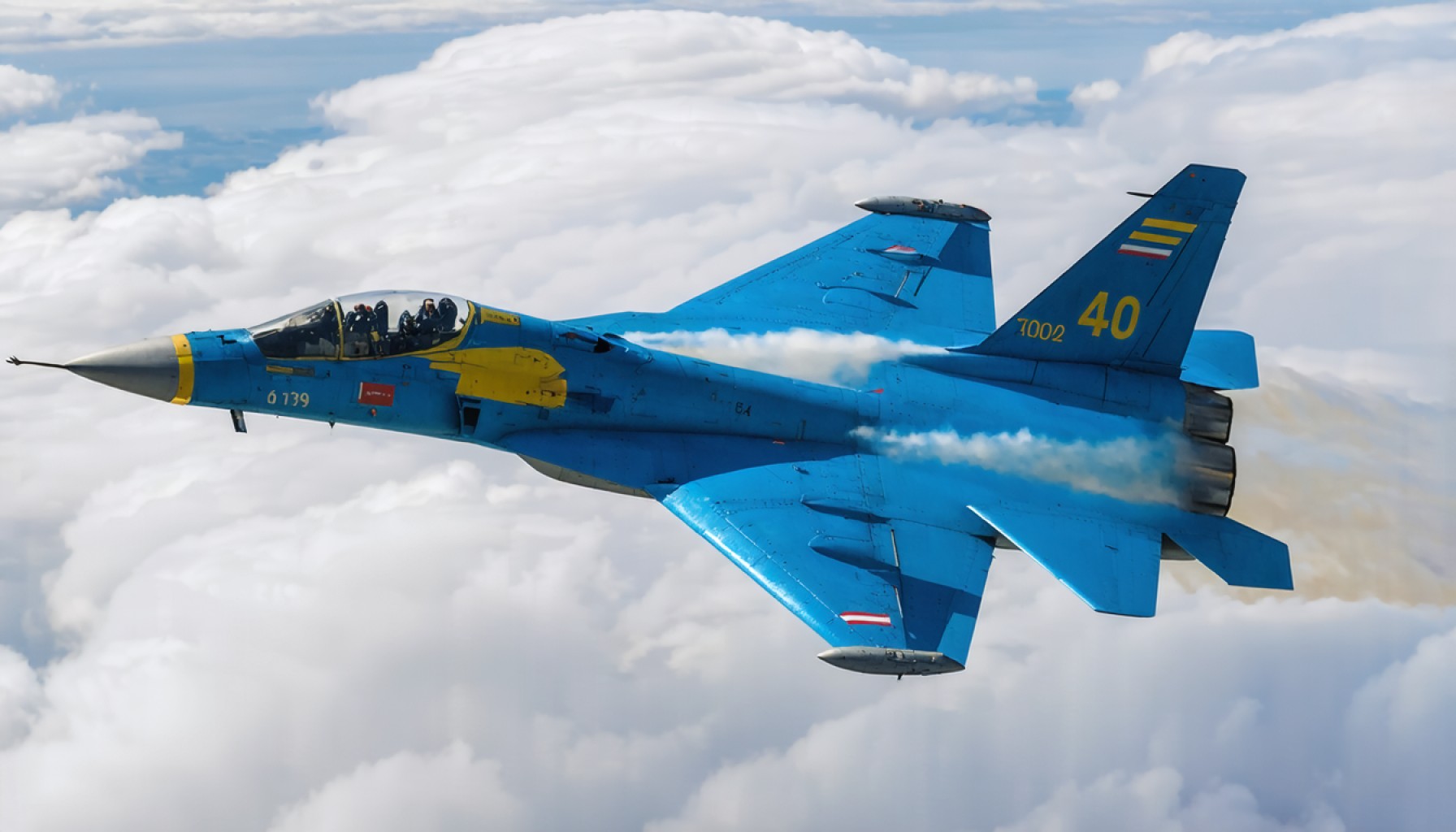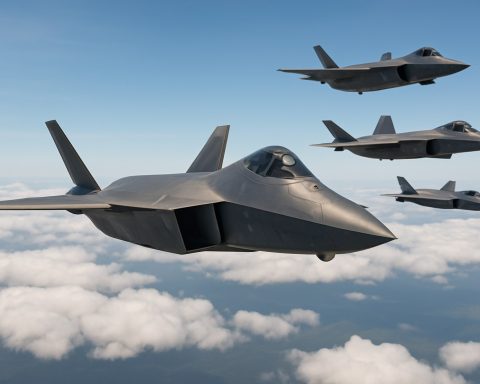- Ukrainian Mirage 2000 jets, recently acquired from France, were deployed to intercept a major Russian attack aimed at crippling Ukraine’s energy infrastructure.
- The Russian offensive involved 67 missiles and 194 UAVs, including Kh-101 cruise missiles and Shahed drones.
- Ukraine’s defense was a coordinated effort using Mirage 2000s, F-16s, electronic warfare systems, and mobile fire units.
- Ukrainian forces successfully neutralized 25 Russian missiles and 100 drones, preventing significant damage to critical infrastructure.
- This operation highlighted international solidarity, with Poland scrambling jets and the Mirage 2000s symbolizing effective cooperation.
- Despite the destruction in cities like Kharkiv, Ukraine’s defense demonstrated resilience and underscored the importance of continued international support.
Under the cloak of night, the Ukrainian skyline erupted in a symphony of conflict as newly acquired Mirage 2000 fighter jets soared into action for the first time. Their mission: intercept a relentless Russian offensive targeting Ukraine’s lifeblood—its energy infrastructure.
Staving Off Disaster
The bold maneuver unfolded as the Russian military unleashed a barrage of devastation. Sixty-seven missiles and a formidable fleet of 194 UAVs swarmed the Ukrainian airspace. The attack aimed to cripple the nation’s critical infrastructures, sparing no effort in its audacious display of firepower. Russian forces deployed an array of airborne threats, from Kh-101 cruise missiles to Shahed drones, reminiscent of an apocalyptic storm.
While the challenge appeared insurmountable, Ukraine’s response harnessed the prowess of Mirage 2000s—a poignant emblem of international solidarity. Acquired from France just weeks prior, these supersonic jets swooped in, intercepting and dismantling enemy threats with precision and resolve.
An Orchestrated Defense
Breaking through the chaos, Ukraine’s layered defense strategy unfurled with the intricacy of a chess game played in a thunderstorm. F-16s and Mirage 2000 warplanes operated in tandem, supported by electronic warfare systems and vigilant mobile fire units. At the heart of this defense, Ukrainian skies buzzed with coordination, meeting each missile with a countermeasure, each drone with defiance.
As dawn broke, the results spoke volumes. Ukrainian forces had successfully neutralized 25 Kh-101 cruise missiles and thwarted a further 100 drones. Notably, a substantial number of Russian missiles failed to find their targets, thwarted by the indomitable defense network.
The Ripple Effect
This dramatic night underscored the broader geopolitical dynamics shaping the conflict. Poland, quick to react, scrambled its own fighter jets, showcasing regional cooperation in real-time. Meanwhile, numerous Ukrainian cities bore the scars of the assault; Kharkiv witnessed injuries from attacks on industrial targets, while strategic hits on gas infrastructure in Ternopil and Poltava confirmed the Russians’ ruthless focus.
The Mirage 2000s, likely the tried and tested 2000-C variant, symbolized the fruitful cooperation between Ukraine and its allies. While whispers of more advanced jets loomed, what remained clear was the immediate impact these fighters had on Ukraine’s ability to defend its skies.
Moving Forward
The dawn of Ukraine’s use of Mirage 2000s serves a stark reminder of resilience amid adversity. In the face of overwhelming odds, Ukraine has not only fortified its defense but declared its unyielding spirit to the world. This episode beckons collective vigilance, affirming the critical role of international support in a theater where skies won or lost dictate the fate of nations.
Breaking Down the Impact of Mirage 2000s in Ukraine’s Defense Strategy
Overview
The introduction of the Mirage 2000 fighter jets into Ukraine’s air defense not only underscores a pivotal moment in their defense strategy but also offers a deeper look into how modern warfare is evolving with international collaboration and advanced technology.
1. Features and Capabilities of the Mirage 2000
The Mirage 2000 is a versatile, fourth-generation jet fighter originally developed by Dassault Aviation for the French Air Force. Here’s a closer look at some key features that make it a valuable addition to Ukraine’s defense:
– Speed and Agility: The Mirage 2000 can reach speeds of up to Mach 2.2, enabling it to quickly intercept and engage enemy targets.
– Advanced Avionics: Equipped with a sophisticated radar and targeting system, the Mirage 2000 can engage multiple targets simultaneously, making it ideal for the complex environment of electronic warfare.
– Armament: The jets can be equipped with a variety of air-to-air and air-to-surface missiles, enhancing their flexibility in combat scenarios.
2. How-To Steps & Life Hacks for Optimizing Air Defense
– Integrate Layered Defense Systems: Combining the capabilities of Mirage 2000s with other aircraft such as the F-16s, along with ground-based defenses, can create a comprehensive and adaptive shield against multi-vector attacks.
– Regular Drills and Simulations: Continuous training exercises involving different branches of the military ensure a fast, coordinated response amidst evolving threats.
3. Real-World Use Cases
– Interception of Cruise Missiles and Drones: The recent deployment vividly demonstrates how Mirage 2000s can intercept high-speed cruise missiles and drones, which have become typical threats in modern warfare.
– Patrolling and Surveillance: These jets can perform high-speed reconnaissance and maintain air superiority, which can deter further escalations.
4. Market Forecasts & Industry Trends
– Rise of Fourth-Generation Fighters: The conflict may lead to increased interest and procurement of fourth-generation fighters worldwide due to their cost-effectiveness and reliability in combat situations.
– International Military Collaborations: As seen with Ukraine acquiring the Mirage 2000s from France, international partnerships are becoming integral to national defense strategies.
5. Pros & Cons Overview
Pros:
– Enhances interceptive and offensive capabilities.
– Bolsters international military ties and support.
– Adds versatility to air defense systems.
Cons:
– Initial training and integration period.
– Maintenance and operational costs.
6. Controversies & Limitations
While the Mirage 2000 boosts Ukraine’s defense, it’s not without limitations:
– Fuel and Operational Range: Though effective, it may require frequent refueling for prolonged operations.
– Replacement Parts and Maintenance: Depending on foreign countries for spare parts can be a logistical and diplomatic hurdle.
7. Actionable Recommendations
– Enhance Electronic Warfare Systems: Strengthen electronic warfare units to support and protect the newly acquired jets.
– Focus on Pilot Training: Allocate resources to fast-track pilot training to maximize the effectiveness of these aircraft.
– Diversify Defense Resources: Continue exploring options for acquiring a mix of aircraft types to maintain operational flexibility.
Conclusion
The introduction of Mirage 2000 fighter jets into Ukrainian airspace represents a significant enhancement to its defense capabilities, showing the world the power of international cooperation and a sophisticated defense strategy. These jets are more than mere machines; they are catalysts for change in a landscape where control of the skies remains critical.
For more information on Mirage 2000s and advanced aviation technology, visit Dassault Aviation.







